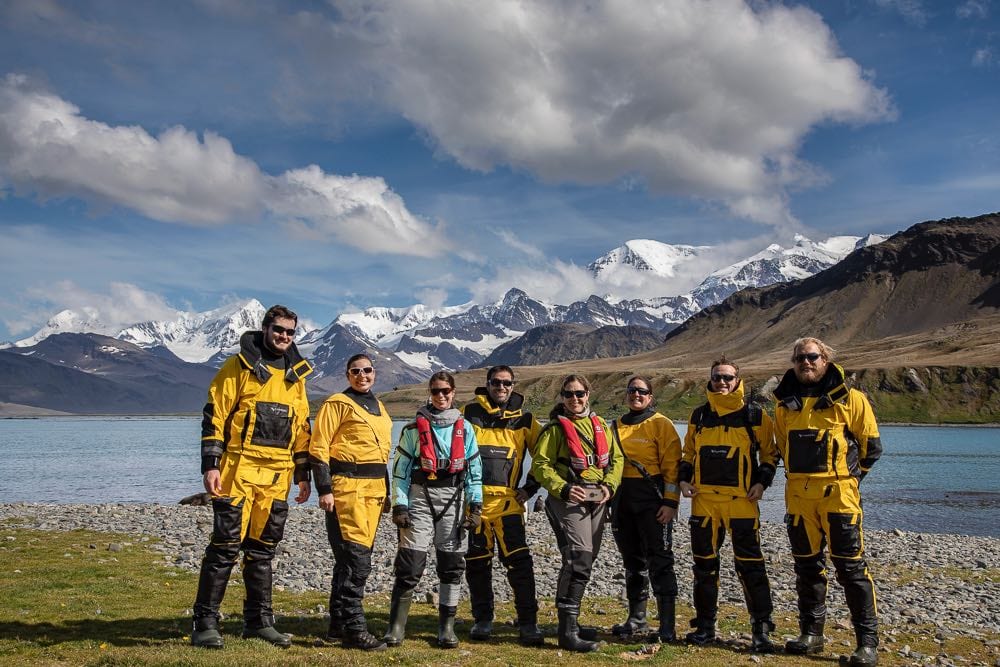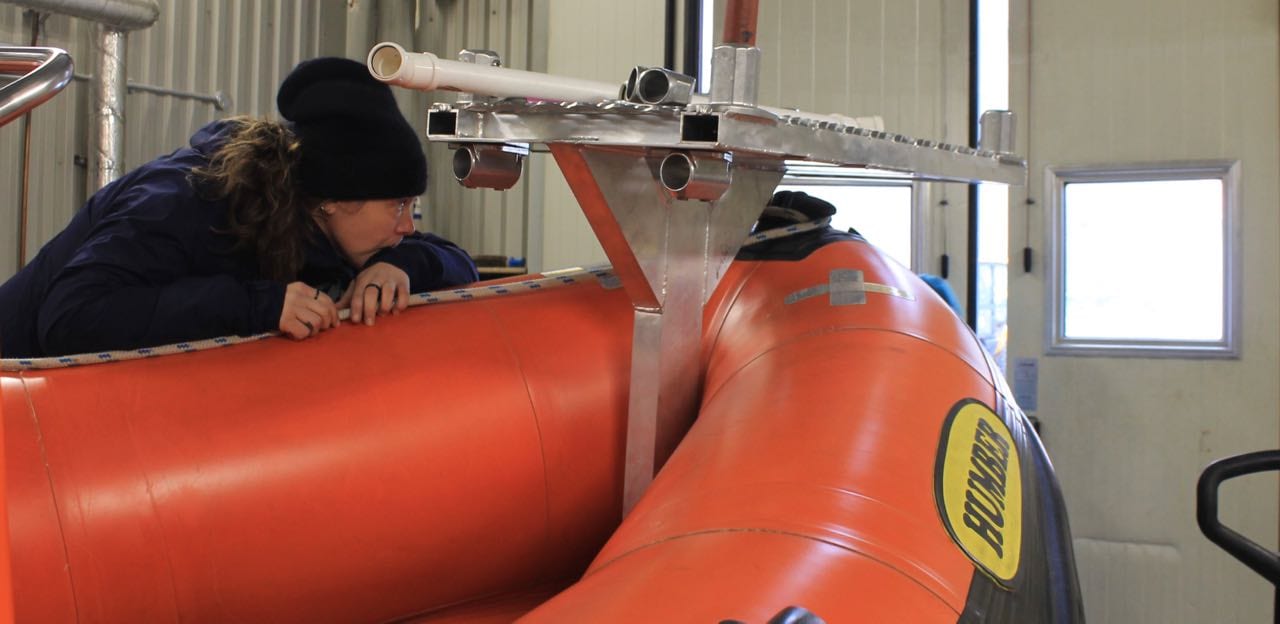Boating in South Georgia waters
Over the past week, our team’s been preparing for fieldwork. Firstly, we have been getting familiar with the boats that the Government of South Georgia and the South Sandwich Islands (GSGSSI) are kindly letting us use for the whale project. When we go out, there will always be two boats; the RIB that will be used for biopsy and tagging work, and the jetboat that will be used as a platform for looking for whales and as a support boat for the RIB. The local boatmen, Baptiste and Zach, have been showing us the vessels and putting us through training exercises. This included doing man overboard drills that included us jumping in the water in our dry suits…in the 3C water…

One thing we quickly realized is that the main marine traffic to be aware of in South Georgia is fur seals! The inshore waters of King Edward Point (KEP) Cove are full of them. Another consideration is icebergs. Even a fist-sized piece of ice could damage the RIBs. Some of our team, such as Steph, are old hands are driving around whales in Antarctic waters and so this is a good chance to get familiar with the KEP RIB. Others have a lot of experience driving around whales, but are getting used to South Georgia waters. The team is pictured below, left to right they are: Connor Bamford (BAS), me (Emma Carroll), Jen Jackson (BAS), Darryl MacDonald, Amy Kennedy (NOAA), Steph Martin (Environmental Officer, Tristan da Cunha), Baptiste and Zach (BAS). Photo courtesy of Amy Kennedy.

An important addition to the RIB
The second consideration is adapting the RIBs for tagging. Amy (see below), our tagger, needs additional height and perspective to effectively deploy a tag. In preparation for this work, engineers at BAS in Cambridge and here at KEP base have been working hard at designing and assembling a bowsprit for the satellite tagging work. Thanks to their hard work, this is now on Sooty the RIB.

Getting out on the water as a team
The third aspect of preparing for field work is practicing working together as a team. Yesterday we had brilliant weather we took Sooty the RIB and Prion the jetboat over to Cumberland West Bay. We practiced using the biopsy and satellite tagging systems in the RIB. Darryl and Connor also practiced deploying the drone from the jetboat.
On the way back to KEP, we encountered a humpback whale! It was by itself and milling about, not the easiest whale to approach, but we decided to attempt photo-identification (photo-ID) work. The best way to photo-ID a humpback is using natural markings on the underside of its tail fluke. Unfortunately, this whale didn’t present its fluke for photographing, but we did get a photo its dorsal fin. While it great to see a whale within our boating area, hopefully we can get a friendly right whale next time!
Help fund our research!
To donate please visit here!